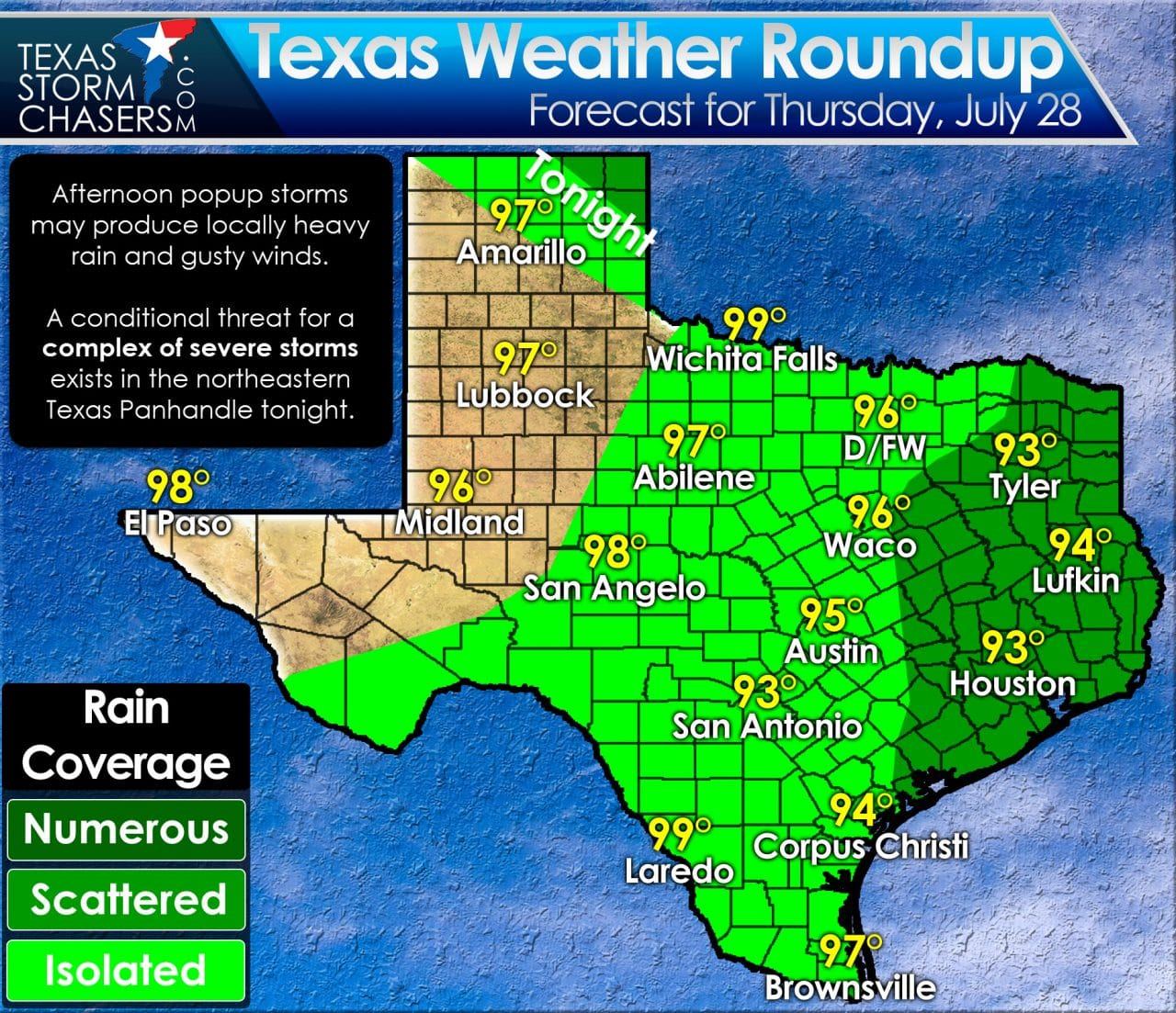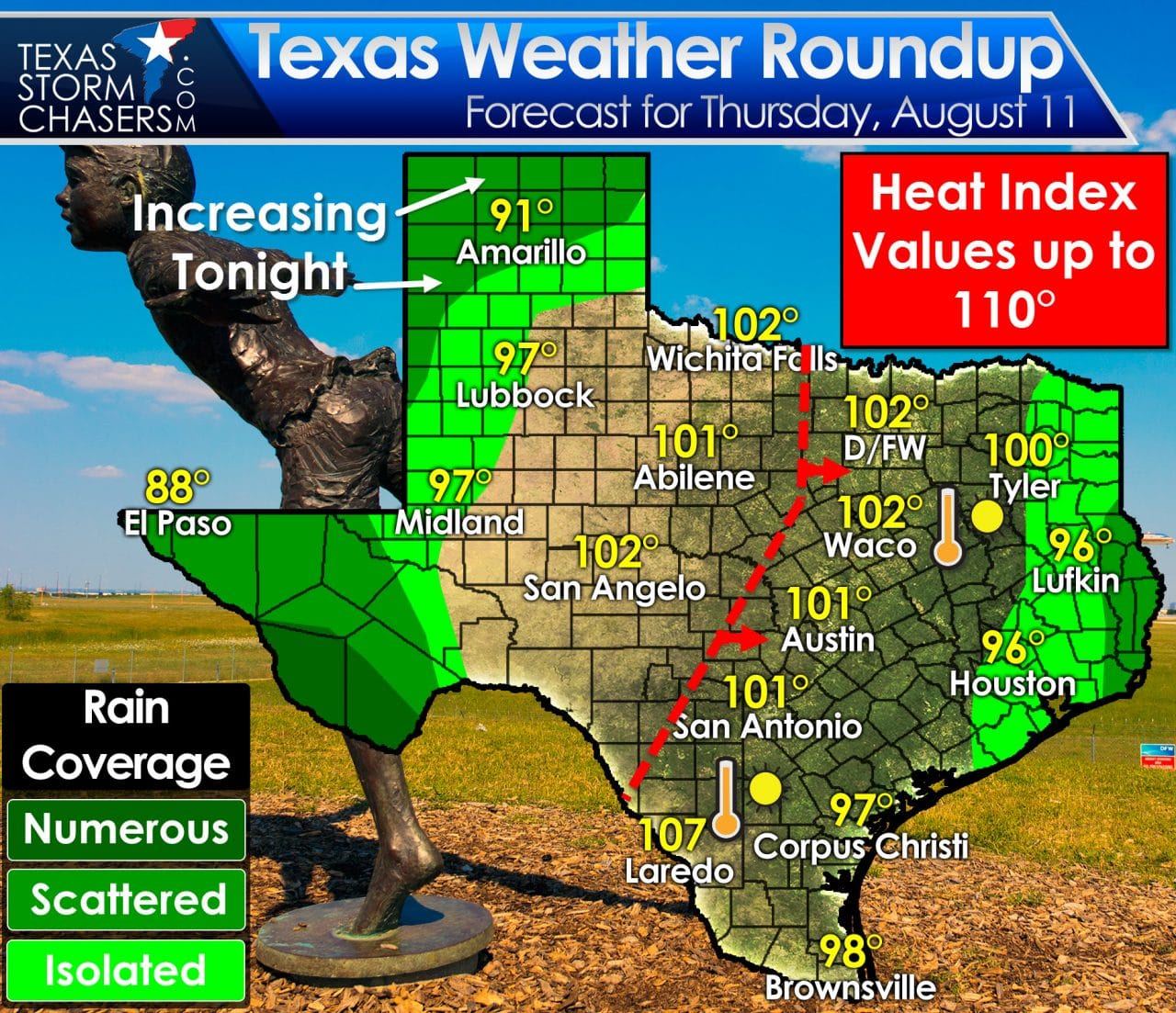Historical Weather Patterns and Trends: Texas Weather

Texas weather – Texas has a diverse climate with significant variations in weather patterns across the state. The average temperature ranges from the mid-50s in the northern Panhandle to the mid-70s in the southern Rio Grande Valley. The state receives an average of about 30 inches of rainfall annually, with the eastern regions receiving more precipitation than the western regions. Snowfall is rare in most parts of Texas, but the Panhandle and West Texas can experience occasional snowfall during the winter months.
Over the past decade or so, Texas has experienced several long-term weather trends. The state has become warmer and drier, with an increase in the frequency and intensity of extreme weather events such as droughts, floods, and wildfires. The average temperature has increased by about 2 degrees Fahrenheit since the early 20th century, and the state has experienced a decrease in rainfall of about 10% during the same period.
Notable Extreme Weather Events
- The 2011 drought was one of the most severe droughts in Texas history. It caused widespread crop failures, livestock losses, and water shortages.
- The 2015 floods were the most destructive floods in Texas history. They caused widespread damage to homes and businesses, and resulted in the deaths of at least 30 people.
- The 2017 Hurricane Harvey was the most powerful hurricane to hit Texas in over 50 years. It caused catastrophic flooding and damage, and resulted in the deaths of at least 68 people.
Impact of Weather on Various Sectors

Weather conditions in Texas have a significant impact on various sectors of the state’s economy. Agriculture, tourism, and energy production are among the industries most affected by weather-related events.
Severe weather events, such as hurricanes and droughts, can have devastating economic consequences. Hurricanes can cause widespread damage to infrastructure, homes, and businesses, leading to billions of dollars in losses. Droughts can impact agricultural production, reducing crop yields and livestock production, and leading to economic losses for farmers and ranchers.
Agriculture
Texas is a major agricultural state, and weather conditions play a crucial role in determining the success of its crops and livestock. Favorable weather conditions, such as adequate rainfall and sunshine, can lead to bountiful harvests and increased agricultural production. However, extreme weather events, such as droughts, floods, and hailstorms, can damage crops, reduce yields, and lead to economic losses for farmers.
Tourism
Texas’s tourism industry is also heavily influenced by weather conditions. Favorable weather, such as warm temperatures and sunshine, attracts tourists to the state’s beaches, parks, and other attractions. However, extreme weather events, such as hurricanes and heat waves, can disrupt travel plans, reduce tourism revenue, and damage infrastructure.
Energy Production, Texas weather
Texas is a major energy producer, and weather conditions can impact energy production and distribution. Extreme weather events, such as hurricanes and ice storms, can damage energy infrastructure, leading to power outages and disruptions in energy production. Additionally, weather conditions can affect the efficiency of renewable energy sources, such as solar and wind power.
Businesses and individuals can mitigate the risks associated with weather-related disruptions by taking proactive measures. These measures may include investing in weather-resistant infrastructure, implementing disaster preparedness plans, and purchasing insurance to cover potential losses.
The weather in Texas can be as unpredictable as a summer storm. From scorching summers to chilly winters, the Lone Star State experiences a wide range of climatic conditions. However, one of the most formidable weather events that Texas faces is the dreaded hurricane.
These powerful storms, with their torrential rains and fierce winds, have the potential to cause widespread damage and loss of life. For more information on the impact of hurricanes in Texas, visit hurricane in texas. Despite the occasional challenges posed by extreme weather, Texas remains a state of captivating beauty and vibrant culture, where the sun shines brightly and the spirit of resilience prevails.
The weather in Texas is notoriously unpredictable, with scorching summers and mild winters. However, the state is also prone to severe weather events, including hurricanes. Hurricane Texas , which made landfall in 2017, was one of the most devastating hurricanes to hit the state in recent history.
The hurricane brought torrential rains, high winds, and flooding, causing widespread damage and loss of life. While hurricanes are a relatively rare occurrence in Texas, they serve as a reminder of the state’s vulnerability to extreme weather.